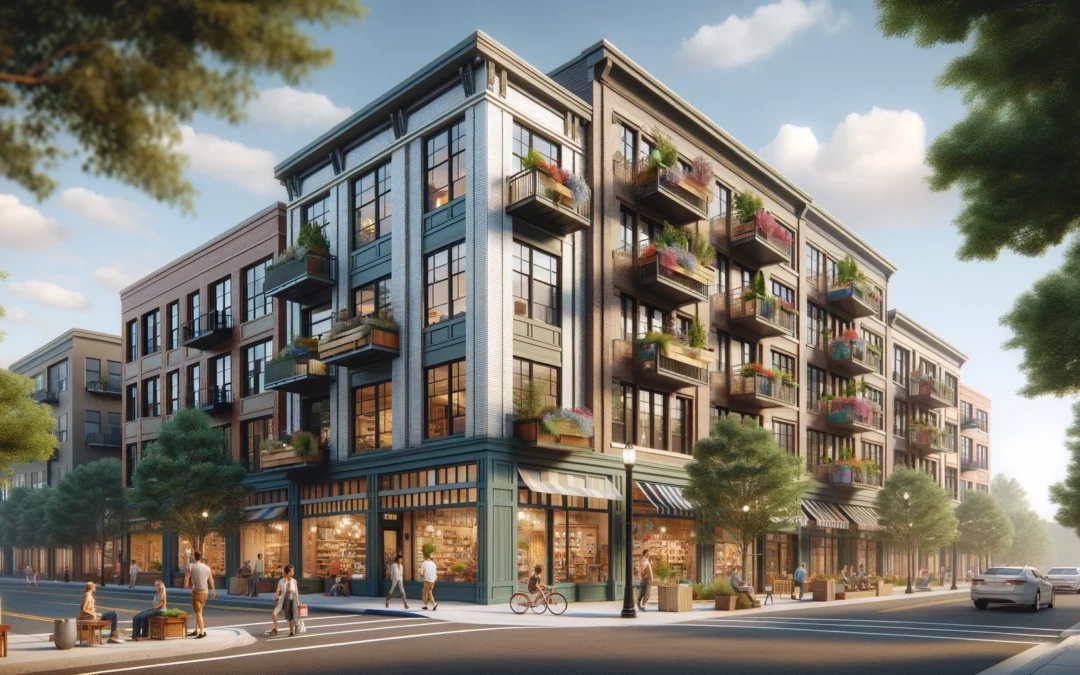Mixed-use buildings are increasingly becoming the go-to option for both developers and communities, offering a blend of benefits that enhance quality of life and boost the local economy. When thoughtfully selected retail tenants are included in these developments, everyone benefits—residents, businesses, and property owners alike. Let’s go over how good retail tenants help in mixed use developments, the kind of tenants that are ideal, and what it means to build a strong community in a mixed use space.
How Good Retail Tenants Elevate Mixed-Use Spaces
Increased Foot Traffic: Retail tenants that draw crowds bring more people into the building, which can be a boon for other businesses. Imagine a bustling grocery store on the ground floor. Its customers might decide to grab a coffee upstairs or visit a nearby salon afterward. This steady flow of visitors creates a thriving environment for everyone.
A More Vibrant Community: The presence of popular retail shops can turn a mixed-use building into a lively hub. When people are regularly coming and going, it creates an energetic atmosphere that attracts even more residents and businesses. This buzz contributes to a sense of community and makes the area more appealing to live and work in.
A Sense of Place: Quality retail tenants contribute to the building’s identity and character. A well-curated selection of stores can make the space feel unique and welcoming, encouraging people to visit frequently and stay longer. This helps in forging a strong community connection.
Ideal Retail Tenants for Mixed-Use Buildings
Grocery Stores: These are a cornerstone for any mixed-use development. They provide essential services and draw constant foot traffic. Residents love the convenience of having a grocery store just an elevator ride away, and other tenants benefit from the steady stream of potential customers.
Restaurants: Dining options are a major attraction. A good mix of eateries can turn a building into a dining destination, bringing in people who might also shop at retail stores or use other services within the building.
Coffee Shops: More than just a place to get a caffeine fix, coffee shops serve as social hubs. They attract a diverse crowd looking for a place to work, meet friends, or simply relax, enhancing the building’s communal feel.
Salons: Beauty and wellness services such as hair salons and spas draw regular visits. These businesses not only offer convenience to residents but also encourage repeat visits, contributing to the building’s dynamic atmosphere.
Gyms: Fitness centers promote a healthy lifestyle and create another reason for residents to stay close to home. They attract a dedicated group of people who visit frequently, ensuring a constant flow of activity within the building.
Crafting a Successful Mixed-Use Community
When selecting retail tenants, it’s crucial to think about the broader community’s needs and the synergies between different types of businesses. The goal is to create a tenant mix that supports one another and fosters a vibrant, interconnected community. This careful curation can transform a mixed-use building into a thriving, self-sustaining environment where everyone—from residents to business owners—thrives.
By understanding and strategically selecting the right retail tenants, developers can ensure their mixed-use buildings are not just places to live and work, but dynamic community hubs where everyone benefits.
If you are interested in a free broker opinion of value or just learning more about investing in commercial real estate in Maryland, Virginia, or Washington DC, please contact us. Avenue Real Estate is a leading full service commercial brokerage in the Baltimore and Washington DC areas and we would love to help you explore your options and make informed decisions about commercial real estate investments.

